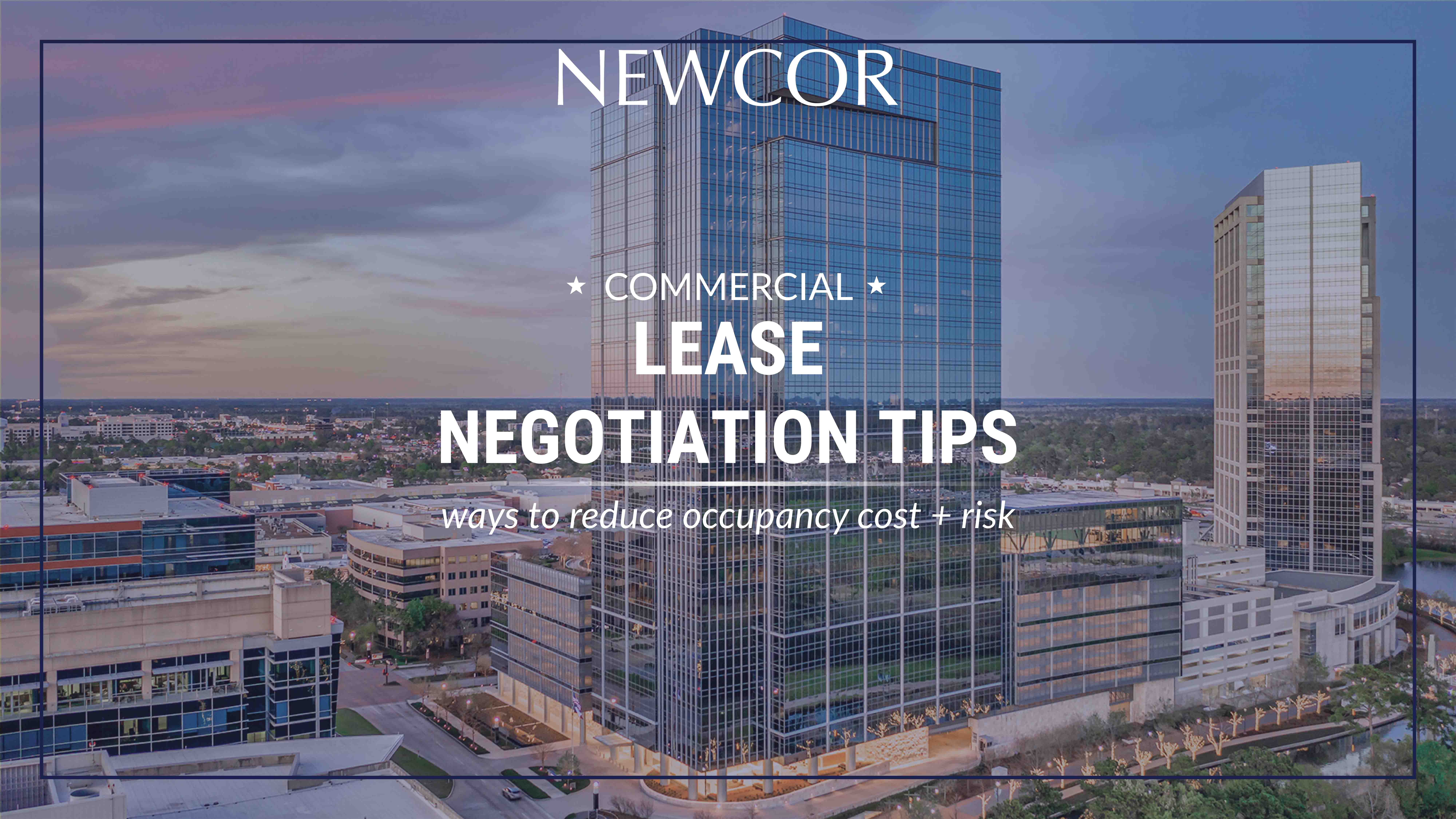Tip Tuesday

For commercial tenants, effectively managing occupancy costs and mitigating risks in lease agreements are essential to long-term financial success. Even minor oversights can lead to unexpected costs or constraints that impact your business. Here are three key strategies to help you reduce both occupancy costs and risks associated with commercial leasing.
1. Obtain a Guaranty of Signage Use
Why This Matters:
Signage plays a pivotal role in visibility, brand recognition, and customer attraction. In some cases, signage can drive foot traffic and increase revenue, especially in competitive areas or locations where visibility is challenging. However, many commercial tenants mistakenly assume that signage rights are automatically granted. Without explicit rights, you may be subject to changes or limitations imposed by the landlord or property management.
How to Approach It:
Negotiate signage rights as part of your lease agreement and obtain a written guaranty of signage use. Specify the size, location, and maintenance responsibilities for your signage, as well as your exclusive right to use it throughout the lease term. This ensures that your signage rights remain protected even if ownership changes or if the property undergoes redevelopment. A guaranteed signage clause minimizes the risk of being forced to alter or remove key visual elements, thereby protecting your brand’s visibility and reducing potential lost revenue.
2. Ensure Property Rules Cover Issues like Parking Overuse, Noise, Fumes, and Non-Synergistic Neighboring Businesses
Why This Matters:
In a shared commercial property, the presence of other tenants can directly impact your operations and customer experience. Issues like parking congestion, excessive noise, unpleasant odors, or a nearby business that doesn’t align with your customer base can all detract from the appeal of your location. Over time, these factors can contribute to customer dissatisfaction and decreased sales.
How to Approach It:
Before signing your lease, review and negotiate the property's rules and regulations. Ensure that they cover potential issues such as parking allocation and enforcement, noise control, and limitations on the types of businesses that can operate nearby. Many landlords are receptive to including or adjusting these stipulations, as they help maintain the property’s appeal and functionality. Additionally, request regular review periods for these rules to ensure they continue to meet the needs of all tenants. This approach allows you to maintain a high-quality environment for your customers and employees, reducing the risk of operational disruptions and declining revenue.
3. Get a Right to Terminate Your Lease if a Major Anchor Tenant Vacates the Premises
Why This Matters:
Anchor tenants—usually large, well-known businesses that attract substantial foot traffic—can significantly affect the success of smaller businesses within a commercial property. When an anchor tenant vacates, the property may see a decline in visitor numbers, negatively impacting neighboring tenants. Moreover, the landlord may replace the anchor tenant with a less compatible business, altering the tenant mix and potentially reducing your customer flow.
How to Approach It:
Include a "co-tenancy" or "right-to-terminate" clause in your lease agreement that allows you to terminate your lease if an anchor tenant vacates and remains unfilled for a specified period (typically 6-12 months). Such clauses provide essential flexibility to exit the lease if a major anchor tenant departs, minimizing the risk of decreased customer traffic and the potential revenue decline that follows. If terminating the lease isn’t feasible, negotiate for a rent reduction until a new anchor tenant is secured. This type of clause adds financial protection and flexibility, especially in multi-tenant properties where your business relies on the presence of larger or complementary businesses.
Conclusion
Reducing occupancy costs and risks in commercial leasing requires proactive measures and detailed negotiations. By securing signage rights, ensuring property rules support a positive environment, and obtaining a right to terminate your lease if a major anchor tenant vacates, you can create a lease agreement that better supports your business’s needs. Each of these strategies offers added protection, enhances operational stability, and ensures your occupancy costs remain predictable and manageable.
When you subscribe to the blog, we will send you an e-mail when there are new updates on the site so you wouldn't miss them.



